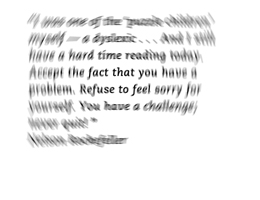Search Results

Help me choose
Don’t know what visual aid suits your eye condition the best? We help you to find the right product.
Help me chooseSearch Results
Dyslexia
 Dyslexia
is a learning disability that makes reading, writing, spelling and sometimes
speaking difficult. It is caused by an impairment of the brain’s ability to
translate images received from the eyes or sounds received from the ears into
understandable language. Dyslexia is not an intellectual disability, since
dyslexia and IQ are not interrelated.
Dyslexia
is a learning disability that makes reading, writing, spelling and sometimes
speaking difficult. It is caused by an impairment of the brain’s ability to
translate images received from the eyes or sounds received from the ears into
understandable language. Dyslexia is not an intellectual disability, since
dyslexia and IQ are not interrelated.
Glaucoma
 Glaucoma
is an eye condition in which the optic nerve is damaged, causing vision loss.
The optic nerve is located at the back of the eye and transmits the images we
see to the brain for interpretation. Glaucoma results in progressive damage to
the optic nerve, which almost always begins with a subtle loss of peripheral
(side) vision.
Glaucoma
is an eye condition in which the optic nerve is damaged, causing vision loss.
The optic nerve is located at the back of the eye and transmits the images we
see to the brain for interpretation. Glaucoma results in progressive damage to
the optic nerve, which almost always begins with a subtle loss of peripheral
(side) vision.
Graves' Disease
 Graves’
Disease is an autoimmune disease in which the thyroid gland is overactive,
producing high levels of thyroid hormones. These high levels of thyroid hormones
are referred to as hyperthyroidism. In a small percentage of people with Graves’
Disease, the fat and muscle behind the eyes are also affected, causing various
symptoms.
Graves’
Disease is an autoimmune disease in which the thyroid gland is overactive,
producing high levels of thyroid hormones. These high levels of thyroid hormones
are referred to as hyperthyroidism. In a small percentage of people with Graves’
Disease, the fat and muscle behind the eyes are also affected, causing various
symptoms.
Keratoconus
 Keratoconus
is a progressive eye condition in which the cornea of the eye thins and begins
to bulge into a cone-like shape. The cornea is the transparent front part of the
eye that covers the iris, pupil and anterior chamber. Together with the eye’s
lens, the cornea reflects light. The cornea is responsible for approximately
two-thirds of the eye’s total optical power.
Keratoconus
is a progressive eye condition in which the cornea of the eye thins and begins
to bulge into a cone-like shape. The cornea is the transparent front part of the
eye that covers the iris, pupil and anterior chamber. Together with the eye’s
lens, the cornea reflects light. The cornea is responsible for approximately
two-thirds of the eye’s total optical power.
Macular Degeneration
 Macular
Degeneration is a medical condition often associated with aging (also referred
to as “age-related Macular Degeneration”) that results in a loss of vision in
the centre of your visual field. Central vision helps us to see objects clearly
and perform tasks such as reading and driving.
Macular
Degeneration is a medical condition often associated with aging (also referred
to as “age-related Macular Degeneration”) that results in a loss of vision in
the centre of your visual field. Central vision helps us to see objects clearly
and perform tasks such as reading and driving.



